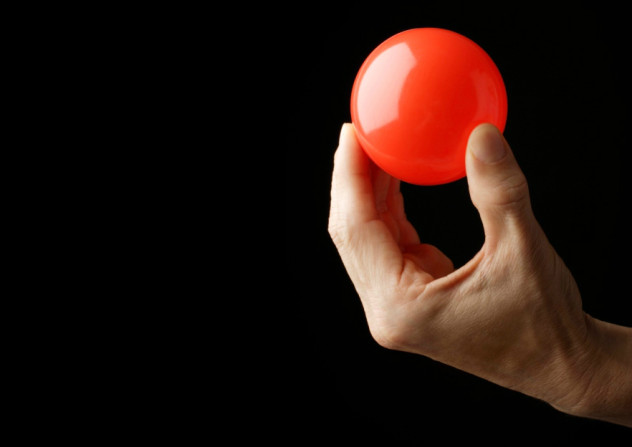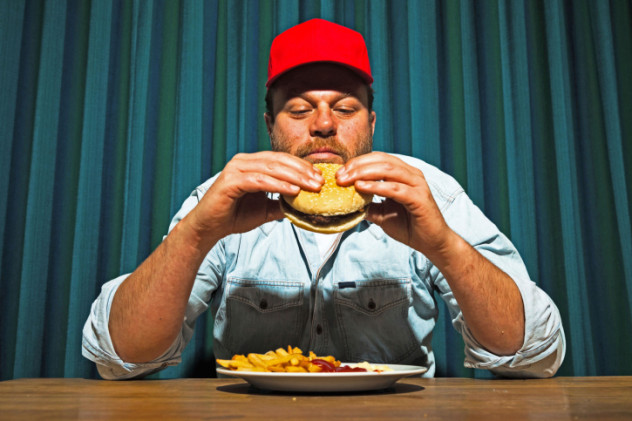 Weird Stuff
Weird Stuff  Weird Stuff
Weird Stuff  Mysteries
Mysteries 10 Tragic Disappearances and Deaths in Joshua Tree National Park
 History
History 10 Ways Childhood Really Sucked in the Old West
 Music
Music 10 Name Origins of Famous Bands from the 1990s
 Religion
Religion 10 Biggest Turnarounds by the Catholic Church
 Weird Stuff
Weird Stuff 10 Unbelievable Times Laws Had Unintended Consequences
 Humans
Humans Ten Historic Women Who Deserve Way More Credit Than They Got
 Movies and TV
Movies and TV 10 Films That Spawned Major Lawsuits
 History
History Ten Times Towns Were Wiped Off the Face of the Earth
 Creepy
Creepy 10 of the Most Disturbingly Haunted Public Houses in the UK
 Weird Stuff
Weird Stuff 10 Niche Subcultures That Are More Popular Than You Might Think
 Mysteries
Mysteries 10 Tragic Disappearances and Deaths in Joshua Tree National Park
 History
History 10 Ways Childhood Really Sucked in the Old West
Who's Behind Listverse?

Jamie Frater
Head Editor
Jamie founded Listverse due to an insatiable desire to share fascinating, obscure, and bizarre facts. He has been a guest speaker on numerous national radio and television stations and is a five time published author.
More About Us Music
Music 10 Name Origins of Famous Bands from the 1990s
 Religion
Religion 10 Biggest Turnarounds by the Catholic Church
 Weird Stuff
Weird Stuff 10 Unbelievable Times Laws Had Unintended Consequences
 Humans
Humans Ten Historic Women Who Deserve Way More Credit Than They Got
 Movies and TV
Movies and TV 10 Films That Spawned Major Lawsuits
 History
History Ten Times Towns Were Wiped Off the Face of the Earth
 Creepy
Creepy 10 of the Most Disturbingly Haunted Public Houses in the UK
10 Thought Phenomena That Cause Us To Make Bad Decisions
We’ve all been there, we’ve all made them, and we’ve all wondered where exactly we went wrong. It turns out that it’s possibly not our fault after all—not entirely, at least. Psychologists have isolated and explored a handful of phenomena that influence the way we make decisions, and understanding some of those phenomena might just help us hack our thoughts and become more aware of the pitfalls and traps that lead to our worst decisions.
10 The Ambiguity Effect

The ambiguity effect is a phenomenon that influences our decision-making practices based on what we know of the outcome. If we’re presented with choices and we know the outcome of one and not of the other, then we tend to pick the choice we can predict—no matter how rewarding the other has the possibility to be.
In a study from the University of Oregon and the University of Pennsylvania, participants were asked to play several games by drawing colored balls from a container and winning money based on what they drew. In one example, they were presented with a jar with 30 red balls inside—the other 60 balls in the jar were either black or yellow. One ball would be drawn from the jar, and based on the color and the choice, people could win some cash. Most participants chose to wager on the red balls because they knew exactly how many were in the jar. Even though there could have been as many as 60 black balls or 60 yellow balls, not knowing caused the participants to choose red.
Given how much in life is absolutely unclear, it’s this principle that often persuades us not to take a chance. When it comes to, say, investing in the stock market, we usually will take our chances with a well-traveled, well-performing stock before we invest in a new technology that may or may not take off—and when it does, we regret it later. On one hand, this can be a survival trait, like eating fruit from the tree that you know isn’t going to poison you instead of taking a chance on a different fruit no one’s tried before. It’s also what often holds us back from things like hitting the stock market jackpot.
9 The IKEA Effect

Your grandmother has spent weeks making you the perfect Christmas sweater, and when you open the package, she sees your less-than-thrilled reaction. She’s hurt and horrified, and you’ve ruined Christmas. It turns out this yuletide drama doesn’t happen just because grandmothers are known for making horrible sweaters—it also has something to do with what’s been called the “IKEA effect.”
The phenomenon refers to the idea that every one of us places a higher value on items that we’ve made or assembled ourselves—so much so that we don’t see the imperfections and the flaws. We tend to value these items more than something that’s been professionally made. The process of creating or building an entire item isn’t simply a labor of love; it’s a demonstration of our abilities. People who have regularly been ridiculed or put down by others for their abilities tend to feel this more strongly, attaching higher values to their creations.
We see the fallout of this phenomenon all the time, especially with ideas. It’s why your boss is dead set on following his own iffy plan instead of his subordinate’s much better one, and it’s why he’ll insist on following through with it, especially when everyone else is telling him it’s not going to work. Our need to prove ourselves can often get in the way of our ability to pick the best course of action, especially when it’s been pitched by someone else.
8 Rhyme As Reason
The world was shocked when O.J. Simpson was cleared of murder charges, but psychologists think that it may have had something to do with one simple phrase: “If the glove doesn’t fit, you must acquit.”
The key is in how we process rhymes. According to research done by Lafayette College, people are more likely to consider phrases that rhyme more truthful and a more accurate representations of human behavior. The phenomenon is even stronger if people aren’t made consciously aware of the rhyme. Once participants in the study were asked to evaluate poetic qualities in phrases, the spell was broken. In one case, subjects found it highly unlikely that “financial success makes people healthier,” but also found it absolutely plausible that “wealth makes health.” It rhymes, it’s catchy, and it sticks with us. That makes us more likely to accept it as truth, which the study went on to suggest happened in the O.J. Simpson case.
It’s also been found to be a rather important part of commercial slogans. When a product’s slogan rhymes, the product seems more trustworthy. By extension, people are more likely to buy that product based on the catchy, rhyming jingle.
7 Clustering Illusion

The “clustering illusion” is the name given to the the recognition of patterns in random occurrences, even when there’s no possible way for there to be a pattern. The clustering illusion is similar to the gambler’s fallacy, but there’s a slight difference. Clustering illusions happen when a person observes something that is completely random without realizing that it is, while the gambler’s fallacy happens when a person starts to see patterns in something they had previous thought was random.
The clustering illusion can happen in a spatial sense. Those living in London during World War II had no idea whether or not the bombings were random. Once they saw maps of bombing locations with clusters in some areas and no bombings at all in others, many believed that the Germans were avoiding certain areas of the city for one reason or another. Later, it was determined that there were clusters of attacks and areas that were completely spared simply because that’s how random patterns work.
Humans are very, very bad at telling whether or not something is completely random or not. Say you’re looking for a place to live, and you happen to read about instances of cancer in different areas. Some areas will have higher instances than others—as much as six or seven times higher. Given the pattern you found, you immediately look elsewhere. It isn’t necessarily a pattern, though, and even though the cancer rate seems high, that’s nothing compared to areas where there really are environmental causes of cancer, which can have occurrences more along the lines of 100 times higher than expected. The truth is that you’re probably not any more or less likely to develop cancer, and you would have been better off looking at the public school systems and winter weather conditions instead.
6 Asymmetric Dominance And The Decoy Effect

If you’re faced with making a choice between three things, your final choice might have less to do with the actual option you choose and more to do with those that you don’t choose.
When making a point about third candidates in elections, the Washington Post looked at it in terms of the decoy effect. The two front-runners in an election might be better off drawing attention to a third candidate than pitting it out against each other. But the decoy effect doesn’t just apply to elections.
Let’s say we’re choosing between two restaurants. One has really good food, but it’s far away. The other is nearby, but the food isn’t as good. It’s a hard choice until a third option is added—a restaurant with really bad food at a distance somewhere between the original two restaurants. Measuring the original two choices against the third completely changes the outcome. At first, it was a question of whether we care more about the quality of the food or the distance of the restaurant. Now it’s a question of which restaurant beats the other two, and the obvious choice is the closer restaurant, which has better food than the middle restaurant and is more convenient than the far-away restaurant.
That’s why the presence of a third option doesn’t always have the impact that we think it would. When there are two front-running choices that a person needs to pick between, a third is often unconsciously used to measure against the others. We therefore make decisions based on the options rather than what we truly care about. Without the third option, we probably would have driven the extra mile for the better cheeseburger.
5 The Hot-Cold Empathy Gap

We’ve all done it. We get out of work after a long afternoon and decide to stop at the store for a few things before we go home to dinner. Suddenly, we’re walking out of the store with six bags and wondering how the heck we managed to spend that much money when we just went in for a snack.
You could chalk it up to shopping hungry, and that’s partially right. It happens because of something called the hot-cold empathy gap. “Cold states” are fairly neutral, but “hot states” denote urgent feelings like fear, pain, and hunger.
In the grocery shopping example, that’s a case of a prospective empathy gap, or trying to make decisions based on the state of mind we’re going to have in the future. There are also retrospective empathy gaps, like when we look back on an alcohol-fueled night and can’t believe we ever thought it was a good idea to confide our deepest secrets in someone we hardly know.
There are interpersonal hot-cold empathy gaps, which happen when we can’t see things from the perspective of someone who isn’t experiencing the same bodily state as we are. One study looked at two groups of people, one group that had just finished exercising, and the other that was just about to start. When told a story about a lost hiker who had no food and water, the people who had been exercising and were already thirsty thought that the lack of water was a much bigger problem.
This gap often causes parents to misjudge their children’s needs. It explains why parents might do things like under- or over-dress their kids for the weather or assume they don’t feel a lot of anxiety about the monsters lurking under the bed. Children perceive the world very differently than adults, but adults can easily forget to take that into consideration.
4 The Peltzman Effect

Named for University of Chicago professor Dr. Sam Peltzman, the Peltzman effect states that too many safety devices and regulations cause more accidents and injuries because of the sense of invincibility they give us. When we feel invincible, we’re more likely to make risky choices. For example, wearing seat belts or helmets might lead to more reckless driving because we feel protected when we wear them. One study from George Washington University found that hockey players had a significant increase in the penalty minutes they accumulated during the game after they started being required to wear visors. They found that it wasn’t just that players felt safer as they were participating in more risky behaviors, but that those increased risks were necessary to feel the same adrenaline rush when they were playing.
It applies to other things, too, and some can have a lasting negative impact on your retirement years. The Peltzman effect can also be applied to saving for retirement. People who have the safety net of a 401k that’s matched by their employer are often under the impression that they’re more secure in their finances than they really are, so they don’t bother to save elsewhere and are more likely to take risks with their money.
Just how powerful the Peltzman effect really is remains up for debate in large part because it’s a difficult thing to measure scientifically. While the seat belt example is particularly difficult, measuring aggression in ice hockey players concretely supports the idea that when everyone is wearing added protection, it’s more acceptable to be aggressive and aim for the face.
3 The Just World Hypothesis

Horrible things happen every day, and there’s often nothing we can do about it. That leaves us with only one option, which is to figure out how to reconcile the awfulness of our world. For many, that’s where the just world hypothesis comes in. If you believe that people get what’s coming to them in the end, that’s what the theory is talking about—and it can make you a horrible person.
It’s comforting to think that killers who walk away from their trials are bound to pay for their crimes sooner or later. But that kind of thinking is a double-edged sword, and it can lead to equally horrible decisions. Social psychologist Melvin Lerner did a series of studies to see what kind of impact belief in a just world had on our behavior. In 1966, he set up an experiment in which people watched others they were told were part of another experiment. Those other people were subjected to electric shocks, and there was nothing observers could do to stop their pain. He found that it wasn’t long before the observers had convinced themselves that they deserved what they were getting.
And that’s a very slippery slope. It’s the reason people suggest women who are the victims of sexual assault or domestic abuse were asking for it. It’s also the reason that programs designed to help minorities or the lower class might not get the support they need to be helpful. Belief in a just world means that we need to justify some pretty terrible things, and that leads to ideas like those found in a 2009 study that outlined the terrifying theory that the presence of Holocaust memorials is likely to increase feelings of antisemitism in people who see them.
If the world isn’t just after all, that means bad things happen to good people. Sometimes, it’s easier to be a horrible person than it is to think that horrible things might happen to you next.
2 Time-Saving Bias

It’s easy to rationalize that if you drive faster, you’ll get where you’re going sooner. The reality is much, much more complicated than that, and some psychological studies have uncovered how bad we are about judging time, distance, speed, and how they’re all connected.
According to the time-bias theory, when you’re driving along at a reasonable, relatively low speed and realize that you’re late, you’ll speed up. The problem is that people will vastly underestimate how much time they’re going to be saving by speeding up a little. The error changes drastically, though, when you’re already going at a high rate of speed. Speeding up when the car is already going fast invariably causes people to overestimate how much time they’re going to save.
In one study, participants were asked to drive the same route several times. For the first, they drove at 30 kilometers per hour (19 mph). They were then asked to repeat the route but reach the end three minutes faster. Then, a new set of participants took the route at 100 kph (62 mph) and were asked to shave three minutes off their times. When starting with a slower speed, participants saved an average of 6.14 minutes. The participants who first took the route at the faster speed only saved an average of 2.21 minutes.
In 2008, another study looked at how well people were able to estimate how much time they were saving by going faster through different road conditions. Invariably, people believed that the route that had a faster initial speed and greater increase would get them to their destination faster than the slower route, even though that wasn’t the case. The next time you’re thinking about tacking on some extra speed to get where you’re going on time, remember that your brain is working against you.
1 The Dunning-Kruger Effect

The Dunning-Kruger effect looks at our knowledge—or, more accurately, it looks at the knowledge that we think we have. According to psychologist David Dunning and his graduate student Justin Kruger, there’s a certain point were incompetence turns into complete and unswayed belief in one’s own ability.
It’s most noticeable in certain groups of people who pride themselves on their expertise in their fields. Think of the hipsters who claim to know all the up-and-coming new bands or the beer ponce that rates all of the most exotic, hard-to-find beverages based on things like “mouthfeel.” They’re so certain about their expertise that they’re often hiding complete and total incompetence. And that’s Dunning’s point. Most completely incompetent people don’t even realize they’re incompetent. If anything, they truly believe that they know what they’re doing and that they’re good at it.
It’s not just a matter of being clueless. When you know you’re clueless, answering questions might be awkward or uncertain. This is a special kind of ignorance, buoyed by confidence and sailing happily on the sea of grossly overestimated prowess.
In part, this kind of confident ignorance is thought to come from ideas that are planted in our minds when we’re very small. While school can get rid of some ideas, others might not be addressed. It’s not often that children are told that they’re terrible at coloring and they don’t have a future as artists. We may firmly believe with all our being that we really are excellent chess players, amazing poets, or literary geniuses because no one told us we weren’t when we were little. We might also think that sight happens because of the ray beams we’re shooting out of our eyeballs if no one ever corrected us.
Dunning says that we all suffer from the Dunning-Kruger effect to a degree. We’re all ignorant about something, and chances are pretty good that we don’t even know about the gaps in our knowledge that can be painfully obvious to others.
Unfortunately, it’s that ignorance that can lead to some devastating circumstances. It can convince your sweater-knitting grandmother that she really doesn’t need to wear her glasses, or maybe that she really can drive as well as she could when she was young.








